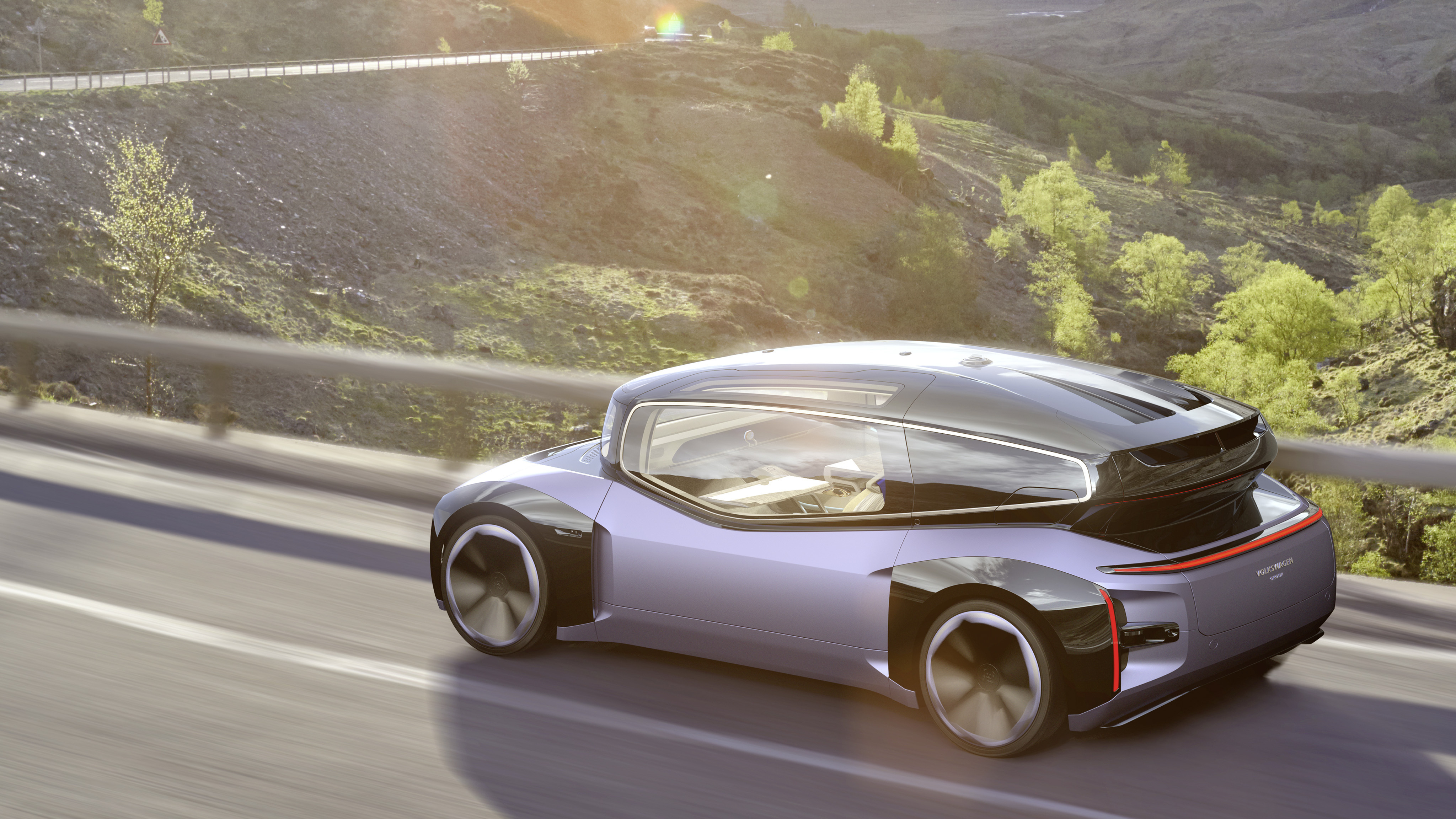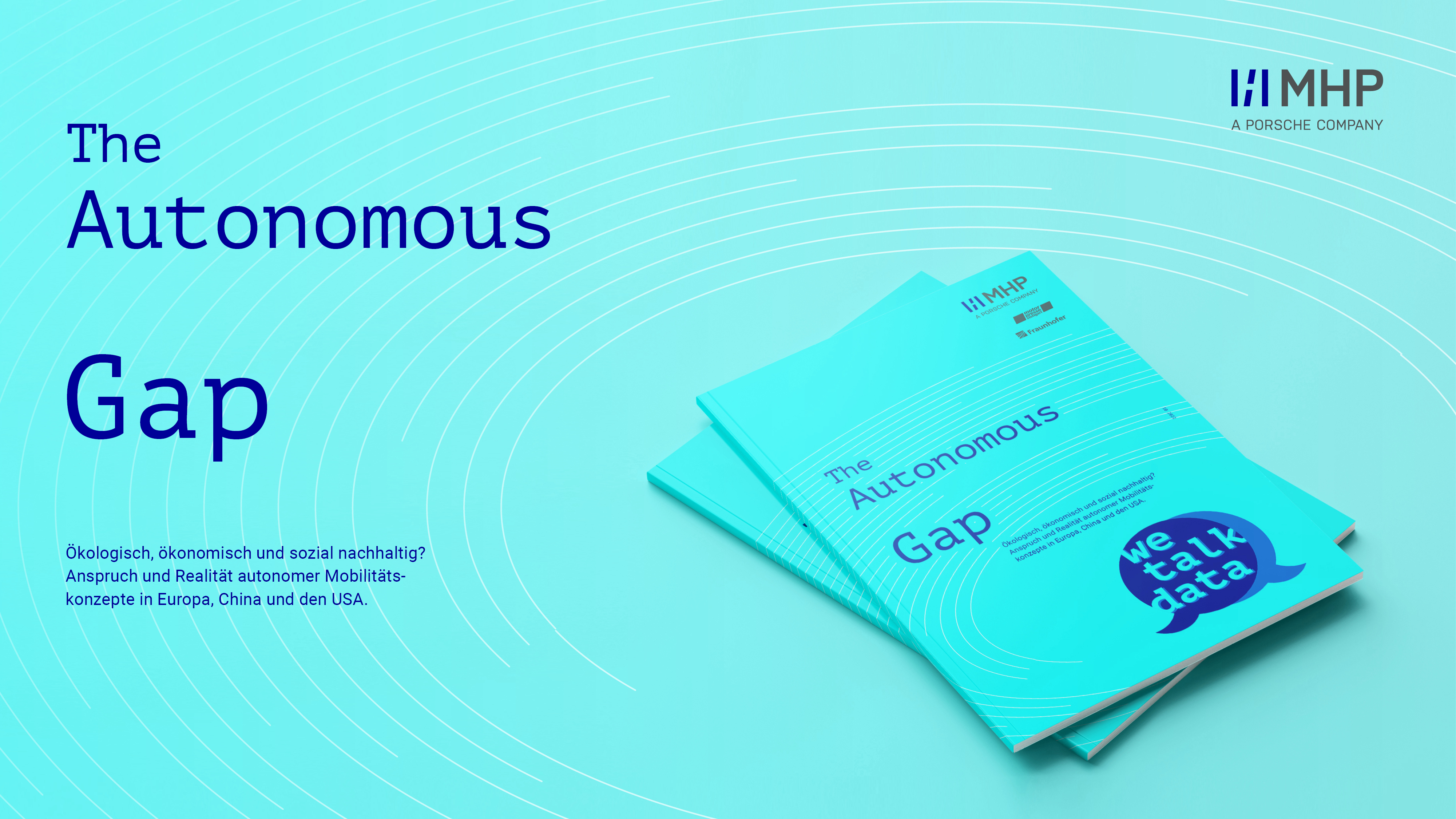- In the near future: The first autonomous driving systems in the transport and logistics sectors are expected to be introduced in the USA
- Germany is trailing behind: Only one in three Germans would travel to work in an autonomous vehicle
- Private autonomous cars: These vehicles are only future proof in China
- Overall: There is a large gap between expectations of shared autonomous mobility solutions and reality
- Gap: The public have little trust in tech giants such as Cruise, Waymo, etc.
- Major opportunities: Public transport companies and local authorities could become providers of shared mobility solutions
Ludwigsburg, Germany – More than 70 per cent of people worldwide can imagine giving up their own cars in favor of autonomous vehicle concepts such as people movers (electric minibuses without drivers). This is one of the key findings of the WeTalkData study “The Autonomous Gap: Environmentally, Economically, and Socially Sustainable? The Aspirations and Reality of Autonomous Mobility Concepts in Europe, China, and the USA,” which management and IT consultancy MHP has published together with its research partners the Fraunhofer Institute for Industrial Engineering IAO in Stuttgart and Motor Presse Stuttgart.
For the study, a representative selection of 5,000 adults in Germany, Sweden, Poland, Italy, Great Britain, China, and the USA were asked about their expectations of shared autonomous mobility concepts or AD (Autonomous Driving) mobility. With 15 international experts, the authors of the study have mirrored the assessments and evaluations made by potential users with regard to feasibility, viability, and technical implementation and have identified seven gaps. The study also suggests which concepts and business models have potential for each region, and where some of the key challenges lie for the different stakeholders. Four autonomous mobility concepts were looked at in greater detail – these concepts contribute to a mobility transition while also having positive environmental sustainability effects in the long term. The concepts include VIP shuttles (designed for individual mobility), people movers (shared minibuses with seating for between ten and 15 people), comfort shuttles, and micro-vehicles (focusing on shared mobility for two to four people).
High level of willingness to do without privately owned cars
Worldwide, more than 70 per cent of people would be willing to do without their car if attractive autonomous driving services existed. A further breakdown of the figures makes it appear even more likely that mobile private transport is in decline. Of the people surveyed, 45 per cent may be willing and 27 per cent would definitely be willing to do without a privately owned car if equivalent AD mobility was available. Among people who already use sharing services today, a massive 87 per cent would use AD mobility immediately. However, whether this group would ever go back to owning a car remains uncertain.
In Germany, at least a quarter of car owners can imagine making a permanent switch to AD mobility to avoid parking issues and traffic jams. Other motives include increased flexibility (48 per cent), around-the-clock availability (43 per cent) and climate-friendliness (40 per cent). Almost half (43 per cent) see autonomous mobility concepts as an alternative to public transport. The transportation of employees to and from the workplace is the most frequently mentioned field of application for all countries. In particular, Poland, Italy, the USA, and China prefer shuttle transport when it comes to commuting. Sweden and Germany share a different attitude, with only one in three Germans being happy to travel to work via autonomous transport. In the USA and China, at least half of people share their journey to work with others and can imagine using autonomous solutions for their commute.
Justifiably, the questioned experts expressed doubts as to whether shared autonomous mobility would actually be a substitute or merely a supplementary offering. In the latter case, this could even result in more journeys being made and traffic increasing. The sustainability effects would be minimal in this case.
Private autonomous cars are the least relevant
This is particularly evident in the “Private Autonomous Automobile” business model. This option would barely reduce traffic and therefore have only limited sustainable effects on the environment. Moreover, this model is the least desired by respondents, which suggests that it is not future proof. However, China is an exception: VIP shuttles – privately owned cars that drive autonomously at Level 4 or 5 – have the greatest potential in China. Respondents in China can mainly imagine using this solution for traveling to and from events and their place of work or education.
Significant safety concerns surrounding technology
People are fundamentally willing to use shared autonomous vehicles, although the degree of willingness varies between regions. China is the front runner at 91 per cent, while just under half of the people in the USA and Germany are prepared to do so. There are several reasons for this reluctance – not least the major safety concerns that persist. This perceived risk surrounding the technology is particularly high in the USA at 59 per cent. Germany lies in the middle at 50 per cent, while 41 per cent of Chinese respondents see the technology as risky.
Little trust in tech giants as providers of public services
The situation is different when it comes to shared mobility, especially regarding the connection of (urban) transport hubs. Here, the respondents consider local authorities and public transport companies the most trustworthy in terms of implementing autonomous mobility offerings. In contrast to private mobility providers (27 per cent), 44 per cent of respondents trust local authorities as AD providers. Not only are they more trusted than tech giants such as Alibaba, Baidu, Cruise, or Tencent, but they also have a subsidy advantage.
The reasons for this are complex, ranging from the great influence of these institutions (especially in China due to the political system) and personal identification through to greater financial opportunities. In addition, cities are already visible as providers of mobility services. It is therefore logical for users to assume that the same stakeholders will provide mobility services in the future.
For everyone, but completely individual: Solutions for public transport
However, it takes more than people having greater trust in the public transport system to make the transition to AD mobility. As it stands, future public transport offerings and business models are neither sufficient nor attractive enough to replace private cars. Reasons include low satisfaction levels regarding the frequency of public transport services and people’s unwillingness to pay for these services. Long-term business model strategies are required here; measures such as the 49-euro ticket proposed in Germany will not suffice on their own. There are already opportunities to establish economically sustainable business areas in both urban and rural areas. The people mover is seen as a concept with great potential for this application, especially in Europe and the USA.
Truck skilled worker shortage is motivating adoption of a promising transport solution
Other vehicle concepts that are likely to become established very soon can be found in long-distance logistics – especially in the USA. In addition to the complex but complete “gate-2-gate” applications, cheaper offerings will also be available as a “hub-2-hub” service, where drivers steer the vehicles for the first and last meters to and from the highway. Factors motivating the adoption of this solution in the USA include the high costs and low availability of skilled workers, poorly developed rail transport, and the fair, stable weather conditions in the south of the USA, where there are major freight transit routes between the east and west coasts. With regard to the end of the journey, small delivery robots are an especially interesting option designed to cover the last stretch to the recipient autonomously. China, Poland, and the USA show the highest level of interest here compared to the other countries, with Germany showing the lowest.
Autonomous mobility will not become widely available any time soon
For the time being, autonomous mobility and transport solutions will only be adopted in Europe, China, and the USA under specific conditions and in selected geographical regions. The previously predicted large-scale deployment by 2025 has been delayed by several years, possibly even decades. This is due to various technical challenges, such as the robustness of autonomous vehicles in the face of bad weather conditions and their safety and control during driving. In Europe, the nature of the roads and the varying framework conditions in each of the countries make it particularly difficult for autonomous mobility concepts to advance.
About the WeTalkData study
The study entitled “The Autonomous Gap: The Aspirations and Reality of Autonomous Mobility Concepts in Europe, China, and the USA” is the third study by the research collaboration WeTalkData. The second study, “Mobility.OS,” and the first study, “The Myth of the Mobility Transition,” were published in September 2021 and September 2020 respectively. This WeTalkData study is published by MHP Management- und IT-Beratung GmbH and was developed in collaboration with the Fraunhofer Institute for Industrial Engineering IAO and Motor Presse Stuttgart. In total, a representative selection of 5,000 adults in the USA, China, Great Britain, Sweden, Poland, Italy, and Germany were asked about their expectations of shared autonomous mobility concepts.




